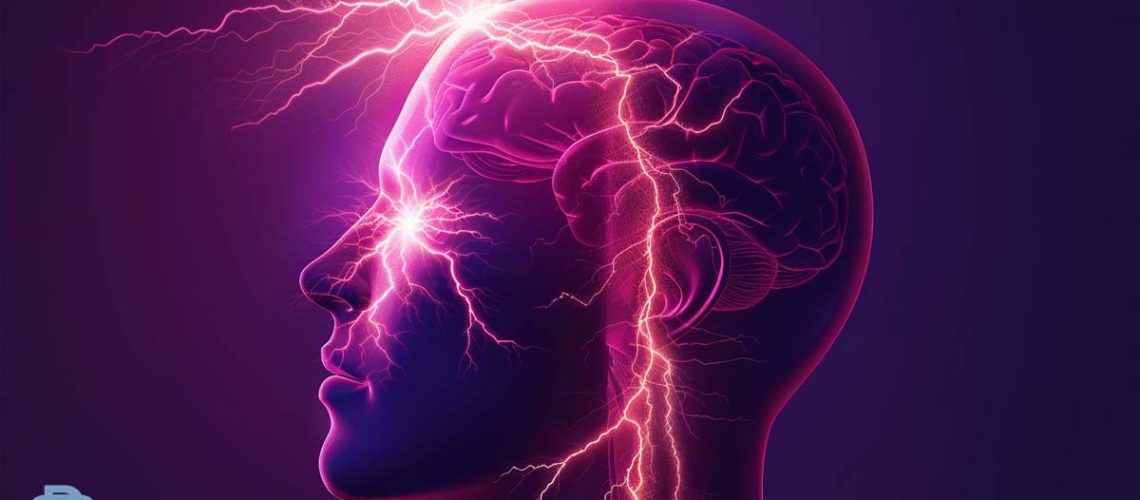Facial Shocks: Understanding Trigeminal Neuralgia
Imagine sharp, electric-like pain jolting across your face. This is Trigeminal Neuralgia (TN), a chronicA condition of slow progression that continues over a long period of time, opposite of acute. condition affecting the trigeminal nerve, responsible for sensation in your face.
TN brings excruciating pain in sudden bursts, making daily life a challenge. Diagnosing and managing this condition requires expertise as the cause isn’t always clear.
Unraveling the mystery: We’ll delve into the nerve’s anatomy and how pain arises in TN.
Hope on the horizon: Exploring advancements in medical science and ongoing research, we’ll seek answers to:
- What new treatments offer hope for those living with TN?
- How can research illuminate new pathways for effective pain relief?
Join us as we shed light on TN, offering a deeper understanding and fostering hope for a future free from excruciating facial pain.
What is Trigeminal Neuralgia
What exactly is Trigeminal Neuralgia, and why does it cause such intense facial pain?
Trigeminal Neuralgia is a chronic condition that manifests as sudden, severe pain in the face, typically affecting one side. This excruciating pain, often likened to an electric shock, is rooted in issues with the trigeminal nerve, which is responsible for transmitting sensations from the face to the brain. The intensity and abrupt onset of pain can be triggered by everyday activities such as eating, speaking, or even a gentle touch.
This condition mainly impacts people over the age of 50 and is recognized as one of the most agonizing pain syndromes. Annually, around 150,000 new cases are identified in the United States alone, highlighting its importance.
The trigeminal nerve root, where the nerve meets the brain, is important in understanding why this pain occurs. Interference or abnormal pressure at this junction can cause trigeminal neuralgia. While the exact mechanisms are complex and can vary among individuals, the disruption to the normal function of the trigeminal nerve is central to the problem, drawing attention to the importance of precise diagnosis and targeted treatment strategies.
Causes
Understanding the causes of trigeminal neuralgia is paramount, as this condition can arise from a variety of factors, including vascular compression, secondary health conditions, and traumatic incidents, each contributing to the severe facial pain experienced by sufferers. Central to the development of trigeminal neuralgia is the irritation of the trigeminal nerve, which is responsible for transmitting sensations from the face to the brain.
The causes of trigeminal neuralgia can be visualized through the following key points:
- Vascular compression, where nearby blood vessels exert pressure on the trigeminal nerve, leading to nerve irritation and intense facial pain.
- Secondary trigeminal neuralgia, stemming from other medical conditions such as multiple sclerosis, tumors, cysts, or arteriovenous malformations, which affect the trigeminal nerve’s function.
- Dental procedures or facial injuries, highlighting the diverse range of events that can trigger trigeminal neuralgia.
- Surgical interventions like microvascular decompression are designed to alleviate the pressure on the trigeminal nerve, targeting the primary cause of classical trigeminal neuralgia.
Accurate diagnosis of the underlying cause is essential for devising an effective treatment plan, underscoring the significance of identifying whether the trigeminal neuralgia is classical or secondary. This differentiation guides the selection of surgical interventions and other therapeutic approaches.
Symptoms of Trigeminal Neuralgia
Trigeminal neuralgia manifests through excruciating facial pain, often likened to an electric shock, that greatly impacts the sufferer’s quality of life. This condition is characterized by severe, shooting facial pain that is sharp and reminiscent of an electric shock. Such intense pain is typically unilateral, affecting only one side of the face, and can occur in various locations along the trigeminal nerve branches. The pain episodes can be brief but are intensely disruptive, leading to significant interruptions in daily activities and overall well-being.
The symptoms of trigeminal neuralgia include:
- Severe, shooting facial pain, often described as sharp or electric shock-like, making even the touch of a gentle breeze unbearable.
- Pain triggered by everyday activities such as eating, talking, or even touching the face, turning routine tasks into challenging obstacles.
- Brief but intense episodes of pain that lead to significant disruptions in the sufferer’s daily life, including interruptions in sleep and inability to perform everyday activities without fear of triggering an attack.
- Periods of remission between episodes, offering temporary relief, but with pain that can worsen over time if left untreated, highlighting the importance of early diagnosis and management.
This debilitating condition not only interferes with the sufferer’s physical well-being but also imposes profound emotional and psychological distress, underlining the need for awareness and understanding of trigeminal neuralgia.
Exams and Tests
After exploring the symptoms that characterize trigeminal neuralgia, it becomes pertinent to examine the diagnostic process, which includes a thorough medical history, neurological examination, and specific imaging tests. To be accurately diagnosed with trigeminal neuralgia, healthcare professionals employ a combination of methods designed to evaluate the nature and source of facial pain.
- Physical Exam: Helps assess nerve function and responses, pinpointing areas of nerve irritation and differentiating trigeminal neuralgia from other facial pain conditions such as cluster headaches or TMJ disorders.
- Imaging Tests: MRI scans are pivotal in detecting underlying conditions that might contribute to the symptoms, such as tumors, nerve compression, or multiple sclerosis. CT scans may also be used to provide additional insights.
- Neurological Examination: Focuses on motor and sensory skills to further investigate the health of the trigeminal nerve and identify potential abnormalities.
- Medical History Review: A detailed exploration of the patient’s symptoms, previous health issues, and any family history of similar conditions, aiding in the exclusion of other causes.
This thorough workup ensures that individuals suspected of having trigeminal neuralgia receive an accurate diagnosis and a treatment plan tailored to address their specific needs and underlying conditions.
Treatment
Various treatment options exist for managing trigeminal neuralgia, ranging from medications to surgical interventions, each tailored to the individual’s condition and severity of symptoms. Anticonvulsant drugs such as carbamazepine and gabapentin are foundational in the drug therapy approach, offering significant relief for many trigeminal neuralgia patients by stabilizing nerve activity.
For those who do not respond adequately to medications, surgical treatment options can provide a more definitive solution. Microvascular decompression surgery is one such intervention, aimed at relieving nerve compression and thereby mitigating symptoms. Stereotactic radiosurgery, including the use of Gamma Knife technology, presents a non-invasive alternative with high success rates, targeting the affected nerve with focused radiation to reduce pain.
NeuromodulationUse of electrical or chemical stimulation to change nerve activity and alter pain perception. techniques, such as peripheral nerve stimulation, offer innovative pain management strategies by altering nerve impulses directly. Additionally, complementary therapies like acupuncture, meditation, and biofeedbackUsing electronic sensors to measure physiological processes like muscle tension, with feedback helping identify and self-regulate these... More play a supportive role, helping patients manage their symptoms alongside traditional treatments.
The all-encompassing approach to treating trigeminal neuralgia encompasses a spectrum from anticonvulsant drug therapy to advanced surgical and non-surgical interventions, including microvascular decompression and Gamma Knife stereotactic radiosurgery, complemented by neuromodulation techniques and holistic therapies to address the multifaceted nature of the condition.
Prognosis Based on Symptoms
The prognosis of trigeminal neuralgia varies greatly among patients, with symptom severity and response to treatment influencing long-term outcomes. Some individuals may experience a worsening of pain over time, while others may find effective relief through various treatments, leading to a relatively pain-free life. The variability in prognosis underscores the complexity of trigeminal neuralgia and the importance of personalized treatment plans.
- Worsening Pain Over Time: For some, trigeminal neuralgia results in progressively severe pain episodes, having a major impact on the quality of life and complicating daily activities like eating or talking.
- Decreasing Pain-Free Intervals: The duration between pain episodes may shorten, reducing the periods of relief and continuously challenging pain management strategies.
- Necessity for Treatment Adjustments: Over time, the initial effectiveness of pain management approaches, including medications, may diminish, necessitating adjustments in treatment or consideration of surgical options.
- Potential for a Relatively Pain-Free Life: With appropriate and timely surgical procedures or treatments, some individuals can manage their condition effectively, enabling them to resume normal activities and enjoy a life with minimal pain.
Understanding the prognosis based on symptoms is important for individuals with trigeminal neuralgia, as it guides the approach to pain management and treatment effectiveness.
When Should I Contact Professional Doctor?
Identifying the right moment to seek medical advice for facial pain, particularly when suspecting trigeminal neuralgia, is important for effective management and treatment. If you experience sudden, severe facial pain that feels like an electric shock, it’s imperative to contact a professional doctor. This intense pain, characteristic of trigeminal neuralgia, often requires specialized care for proper diagnosis and management.
Seeking medical attention becomes essential if you have recurring episodes of intense facial pain triggered by simple activities such as brushing your teeth or touching your face. These symptoms can greatly impair your quality of life, making prompt medical attention necessary. Consulting a healthcare provider is advisable if you suspect your symptoms align with those of trigeminal neuralgia. Their expertise can guide you towards an accurate diagnosis and an effective treatment plan.
Additionally, if you find yourself struggling to manage the pain or if the episodes are severely affecting your quality of life, seeing a doctor should be your next step. Early intervention by a professional doctor can prevent the condition from worsening and help maintain your quality of life. Remember, timely contact with a healthcare provider is key to addressing trigeminal neuralgia effectively.
Can Trigeminal Neuralgia Be Prevented with a timely Treatment?
Understanding when to seek medical help for symptoms indicative of trigeminal neuralgia is the first step; next, we must explore whether timely treatment can prevent this debilitating condition. With the right approach, it’s possible to not only manage the symptoms but also substantially impact the course of the disease.
- Timely treatment of trigeminal neuralgia can halt the progression of pain, enhancing the patient’s quality of life.
- Early intervention, through medications and surgical procedures, has been shown to markedly reduce the frequency and severity of attacks.
- A vital diagnosis is essential for preventing complications that may arise from untreated conditions, ensuring a tailored and effective management plan.
- Consulting with healthcare providers who offer expert care in trigeminal neuralgia can lead to improved outcomes and may prevent the symptoms from worsening.
Moreover, incorporating preventive measures like stress management and lifestyle adjustments can complement medical treatments, offering a holistic approach to managing trigeminal neuralgia. Together, these strategies underscore the importance of early and proactive management in not just controlling but potentially preventing the escalation of trigeminal neuralgia, thereby safeguarding the patient’s well-being and quality of life.

